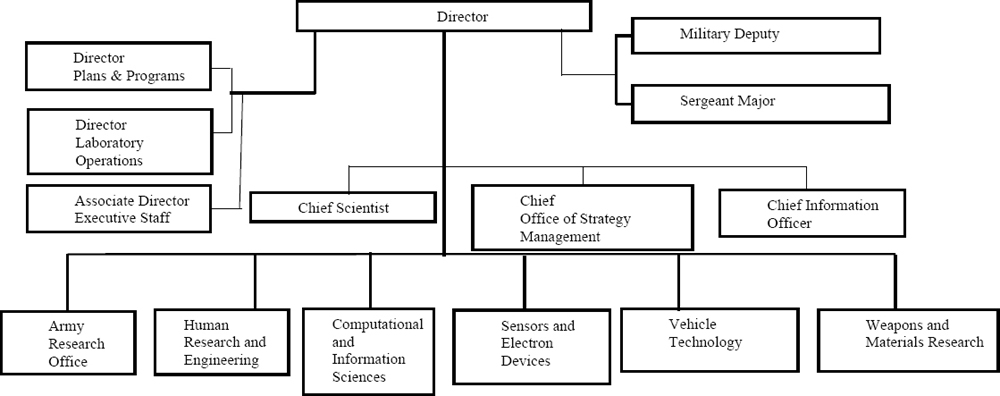A
Army Research Laboratory Organization and Research Core Competency Clusters
Figure A.1 is an organization chart for the Army Research Laboratory (ARL), and Table A.1 maps the ARL organizational chart to the research core competencies reviewed in 2019 and 2020.

TABLE A.1 Mapping of the Army Research Laboratory (ARL) Organization Chart to the Research Core Competency Areas Reviewed in 2019 and 2020
| Research Core Competency | Topic | ARL Directorate Involved |
|---|---|---|
| 2019 | ||
|
Network and Information Sciences |
Information Sciences Networks Cyber |
CISD, SEDD, HRED |
|
Computational Sciences |
Computational Sciences Atmospheric Sciences |
CISD, SEDD, VTD, WMRD |
|
Human Sciences |
Human-Autonomy Team Interactions and Humans Understanding Autonomy Autonomy Understanding Humans and Estimating Human-Autonomy Team Outcomes Human Interest Detection Cyber Science and Kinesiology Neuroscience, Training Effectiveness, and STRONG |
HRED, CISD, VTD |
| 2020 | ||
|
Materials and Manufacturing Sciences |
Optical Sciences and Photonics Electronics and Optoelectronics Energy Science |
SEDD, WMRD |
|
Propulsion Sciences |
Platform Power Platform Design and Control Intelligent Maneuver |
VTD, CISD, SEDD, HRED |
NOTE: CISD, Computational and Information Sciences Directorate; HRED, Human Research and Engineering Directorate; SEDD, Sensors and Electron Devices Directorate; VTD, Vehicle Technology Directorate; and WMRD, Weapons and Materials Research Directorate.


